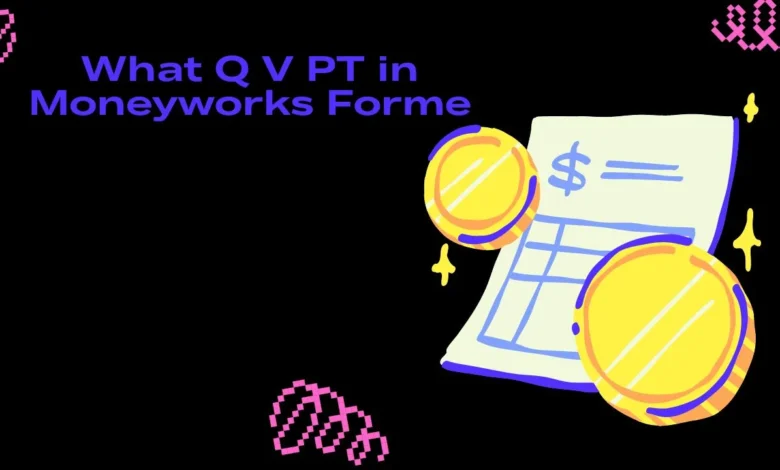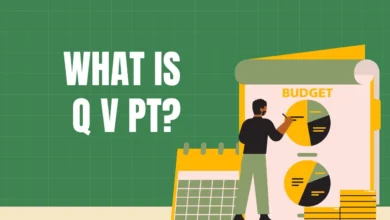What Q V PT in Moneyworks Forme: An Overview

Understanding the different elements of financial tools and concepts can sometimes be challenging. One such topic people often encounter is “what Q V PT in Moneyworks Forme” — a term that might seem complicated at first glance. This article will break it down, addressing key aspects to provide a better understanding of what it means, how it works, and its benefits.
What Is Q in Moneyworks Forme?
The “Q” in Moneyworks Forme refers to a quantity or a numerical value used in financial calculations. When managing finances, you often work with different quantities, like income, expenses, or asset values. Q is usually represented as a base number that is applied in various formulas to help calculate important metrics such as profit margins, cash flow, or loan interest rates.
Understanding this number is crucial because it gives you a clear picture of how much you are working with. Whether you are budgeting or investing, having a firm grasp on “Q” can help in making informed decisions.
Why Is It Important?
The importance of knowing what Q is stems from its role in helping people manage their financial outlook. Knowing how much money or resources you are dealing with makes it easier to make smarter financial choices. In the long run, this leads to better financial planning and control.
What Does V Mean in Moneyworks Forme?
“V” typically stands for value. It is often used to indicate the worth of something, whether it’s an investment, a stock, or other financial assets. In the context of “what Q V PT in Moneyworks Forme,” V provides insight into how valuable a particular financial element is in relation to the rest.
Value plays a huge role in personal finance. Whether you’re buying a property or investing in stocks, you always look at the value to decide if it’s a good decision. By knowing the value of an asset, you can make better predictions about whether it’s worth investing in.
How V Affects Decision-Making
When you know the value of something, you are better equipped to decide whether it’s worth investing in. You can compare different assets or financial products and choose the one that offers the best return for its value. This is essential for both short-term financial goals and long-term investments.
What Is PT in Moneyworks Forme?
PT stands for percentage or percentage term. In financial contexts, percentages are used everywhere. Whether it’s calculating interest, figuring out the percentage of income spent on something, or estimating returns on investment, the percentage term is key to interpreting financial information.
PT in “what Q V PT in Moneyworks Forme” relates to the percentage figures that represent interest rates, profit margins, or returns. It’s a way to express parts of a whole in more digestible numbers, making it easier to understand financial outcomes.
Why Percentages Are Vital in Finances
Percentages allow people to easily compare different financial options. For instance, if you’re comparing loans, the interest percentage will tell you which loan has better terms. Similarly, if you’re comparing investment returns, percentages show you which option yields more profit.
How Do Q, V, and PT Work Together in Moneyworks Forme?
Combining Q, V, and PT
In Moneyworks Forme, the combination of Q, V, and PT is often used to make sense of complex financial situations. For example, you may calculate how much (Q) an investment is worth (V) and how much percentage (PT) return you expect from it.
Example of Use
Let’s say you are investing $1,000 (Q) into a stock that is valued at $100 per share (V) and offers a 10% return (PT). These three elements will work together to help you estimate how much return on investment you can expect.
Why Is Understanding These Terms Important for Financial Success?
Financial Literacy and Success
Knowing what Q, V, and PT mean and how to use them is a big step toward financial literacy. Understanding these terms helps in various aspects of personal finance, from budgeting to investing, as well as making everyday money decisions.
Financial success often comes down to making informed choices, and these three elements play an integral role in understanding the bigger financial picture.
Benefits of Using Q, V, and PT in Moneyworks Forme
| Benefits | Explanation |
|---|---|
| Helps in making informed financial choices | By understanding these terms, you can make smarter decisions with your money. |
| Simplifies complex financial data | Q, V, and PT make it easier to break down and analyze financial information. |
| Assists in comparing options | Percentages and values help you compare different financial products or assets. |
| Improves financial planning | When you know how much you have and how much you expect to gain, planning becomes easier. |
How Can You Use These Concepts in Everyday Finances?
Using Q in Budgeting
When setting a budget, knowing the exact quantity of money (Q) you have is the first step. By tracking your income and expenses, you can decide how much to allocate to different areas like housing, food, and savings. Understanding Q helps you avoid overspending and saves money for future goals.
Applying V to Investments
Before investing in any asset, look at its value (V). You want to invest in things that will grow in value over time. Whether it’s property or stocks, knowing the current value helps in making an informed decision on whether to buy, hold, or sell.
PT in Savings and Loans
The percentage term (PT) is crucial when dealing with savings accounts or loans. If you’re saving money, higher percentages mean better returns. Conversely, if you’re taking out a loan, you want to look for a low-interest percentage, so you don’t end up paying too much in interest.
Common Mistakes When Using Q, V, and PT
Misunderstanding Percentages
A common mistake is not understanding how percentages work. For example, a 5% interest rate might seem small, but it can add up quickly if applied over a long time. It’s important to know how percentages will impact your finances over time.
Ignoring Value
Another mistake is ignoring the current value of an asset and just looking at its potential return. Sometimes an asset may look promising because it offers a high return percentage, but if its current value is low, it might not be worth the risk.
How Can You Improve Your Understanding of Q, V, and PT?
Education and Resources
Improving your understanding of financial terms like Q, V, and PT is possible with the help of online resources and courses. Many websites offer tools and calculators to help you better understand how these terms apply to your finances.
Final Thoughts on What Q V PT in Moneyworks Forme
Understanding what Q V PT in Moneyworks Forme means can help you gain better control of your finances. By knowing how much you have (Q), its value (V), and the percentage returns (PT) involved, you can make better decisions. Financial literacy empowers you to navigate through budgeting, investing, and other money-related tasks more confidently. Start applying these concepts today to see how they can benefit your financial life.




